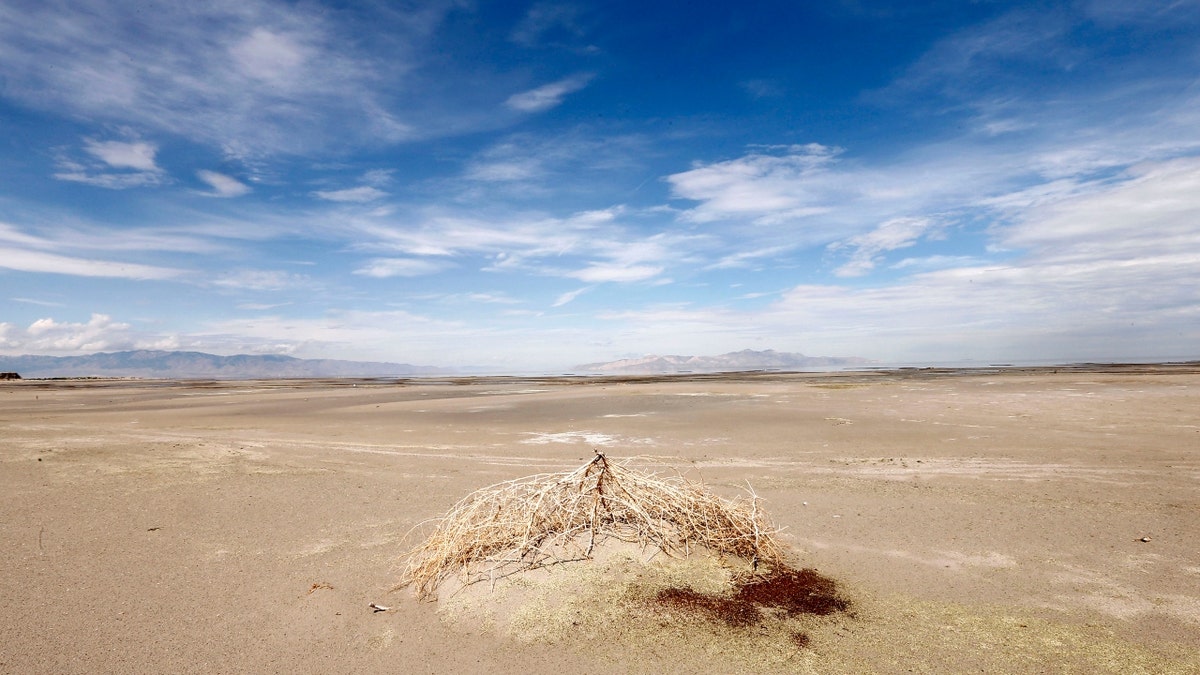Fox News Flash top headlines for June 22
Fox News Flash top headlines are here. Check out what's clicking on Foxnews.com.
Whipping winds around Utah's Great Salt Lake and Salt Lake City have led to dust advisories – and the possibility of health impacts to the surrounding community.
Images from the National Weather Service (NWS) show hazy skies and dust clouds impacting highways.
Utah drivers were warned to use caution when traveling, or to stop driving altogether.
Experts have warned that dust from the exposed lake bed, where there are metals and toxins like arsenic, is potentially hazardous.

The salt covered lake bed and saline waters of the Great Salt Lake are pictured from north of Salt Lake City, Utah, April 14, 2020. (REUTERS/Jim Urquhart)
AMERICANS THREATENED BY EXTREME HEAT, RECORD TEMPERATURES
The lake has been shrinking amid severe drought in the West, and the U.S. Drought Monitor shows 78.29% of the region currently in moderate to exceptional drought.

Pink water washes over a salt crust on May 4, 2021, along the receding edge of the Great Salt Lake. The lake has been shrinking for years, and a drought gripping the American West could make this year the worst yet. (AP Photo/Rick Bowmer)
According to FOX 13, the Utah Department of Environmental Quality is advising those who are sensitive to dust and people with respiratory conditions to monitor warnings and consider moving indoors.
WHY IS YELLOWSTONE NATIONAL PARK CLOSED?
The station said the state's Department of Natural Resources said the Great Salt Lake may be weeks from dropping to a new historic low.

A tumble weed sits on a mud flat where water used to be next to the Great Salt Lake Marina west of Salt Lake City, Utah, August 4, 2014. The Great Salt Lake water levels are expected to be the lowest since 1963 because of a prolonged drought in Utah. (REUTERS/George Frey)
KUER reported that lawmakers had recently suggested looking into building a Pacific Ocean pipeline to bring water to the lake.
CLICK HERE TO GET THE FOX NEWS APP
Last summer, the Great Salt Lake already dropped to a record low, with receding waters impacting local wildlife.



